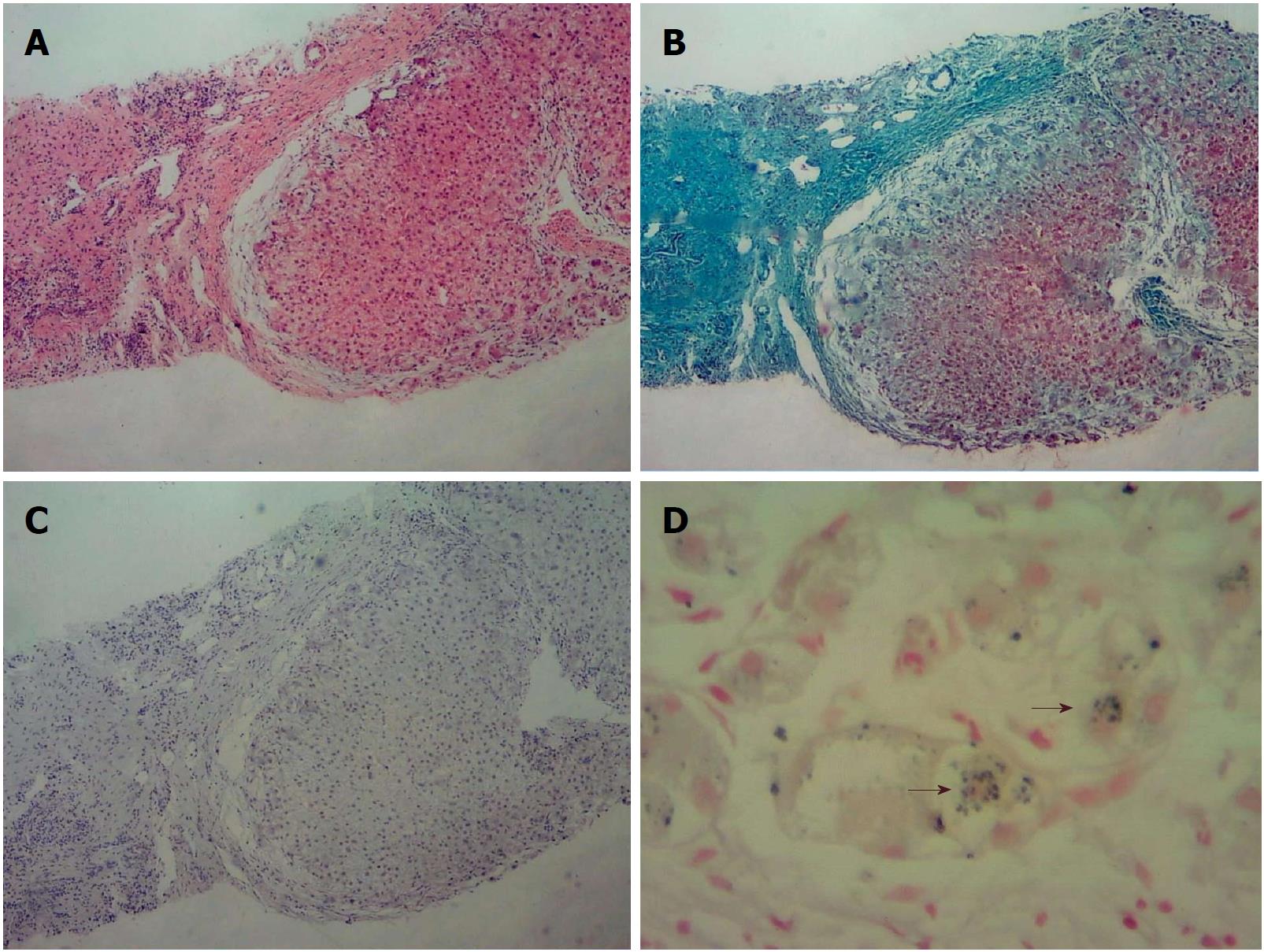Copyright
©The Author(s) 2018.
World J Gastroenterol. Nov 7, 2018; 24(41): 4716-4720
Published online Nov 7, 2018. doi: 10.3748/wjg.v24.i41.4716
Published online Nov 7, 2018. doi: 10.3748/wjg.v24.i41.4716
Figure 1 Microscopic features of the liver biopsies.
A: Severe fibrosis in the portal area and formation of hepatocyte nodules (hematoxylin and eosin staining, × 100); B: “Halo sign” at the junction of the portal area and liver parenchyma (Masson staining, × 100); C: Ductopenia; immunohistochemical staining for cytokeratin 19 showed no obvious bile duct hyperplasia (CK19 immunohistochemical staining, × 100); D: Hepatocyte cytoplasm showing copper-associated protein sinking (rhodamine staining, × 400).
- Citation: Tan YW, Ji HL, Lu ZH, Ge GH, Sun L, Zhou XB, Sheng JH, Gong YH. Ductopenia and cirrhosis in a 32-year-old woman with progressive familial intrahepatic cholestasis type 3: A case report and review of the literature. World J Gastroenterol 2018; 24(41): 4716-4720
- URL: https://www.wjgnet.com/1007-9327/full/v24/i41/4716.htm
- DOI: https://dx.doi.org/10.3748/wjg.v24.i41.4716









